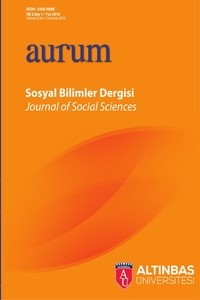Structural Change in Wage Differentiation Patterns for Turkey in Terms of Working in the Same Industry
Structural Change in Wage Differentiation Patterns for Turkey in Terms of Working in the Same Industry
This
paper investigates the wage differentiation patterns in Turkey
between couples who work in the same industry and those who work in
different industries. The Turkish Household
Labor Force Surveys from 2004 to 2014 are utilized as the main data.
As the graphical representation verifies, regions can be grouped into
three with respect to wage differentiation. In the first group,
differentiation gap remains the same; for the second group, the gap
increases; and for the last group, while the gap first decreases and
disappears, it then increases again in favor of who the ones who work
in the same industry. These findings are valid not only for
females’ but also males’ mean hourly income. In the empirical
analyses, the squared wage differences are clustered into three
categories by using K-Means clustering method. Then, the behavior of
each region changing from one cluster to the other are tracked and
calculated with variations of this behavior. It
is examined that not only eastern regions but also northern and
landlocked regions changed their clusters during the last decade. In
addition to that, their calculated variation of this behavior is
higher compared to the ones for western, southern and seaside
regions. If the variation is higher for the region, this is
probably due to structural changes in those regions.
Keywords:
Wage Income, Same Industry Regional Variations, K-Means Clustering,
___
- Bakış. Ozan and Polat Sezgin. “Wage Inequality in Turkey: 2002-2010” GIAM Working Paper No: 13-09, July, (2013).
- ISSN: 2458-9896
- Yayın Aralığı: Yılda 2 Sayı
- Başlangıç: 2016
- Yayıncı: Altınbaş Üniversitesi
